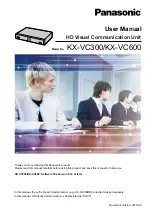
1.5
Understanding System Grounding Requirements
Transient voltage spikes, if induced onto CO or CENTREX lines, can travel through the cable and into the
common equipment. The telephone company offers basic protection against this condition but it is usually
designed to protect the central office circuits. While it will also provide some protection to the common
equipment, you should not rely upon it for total protection. To help ensure that external over-voltage surges do not
damage the system, you should install and properly ground primary protection devices, such as gas discharge
tubes or similar devices, on all lines. While the line boards have internal secondary surge protection on all line
ports, in order for this protection to be effective, you MUST connect the common equipment cabinet to a reliable,
effective earth ground.
Proper DXP grounding is necessary for trouble-free operation and personnel safety. The DXP Plus has the
following three types of grounds:
•
Service Ground—a neutral power line wire that is connected to the ground bus in the premises’ AC power
panel,
•
System Ground—a non-current carrying power line wire that is connected to the ground bus in the premises’
AC power panel,
•
Frame Ground—a low impedance conductor that places the common equipment cabinet at reference ground
potential. The frame ground provides the greatest safety by limiting electrical potential between non-current
carrying parts of the system. The common equipment cabinet provides a ground stud on its cabinet for access to
its frame ground.
Effective grounding requires that you connect the frame ground to a good earth ground. A good earth ground is
one such as the ground bus in the premises’ AC power panel or a public metallic cold water pipe at a point
immediately at its entrance to the premises and ahead of any meters, pumps, or insulating sections that have been
added for vibration reduction. Avoid using the premises’ structural steel frame as it may not be at earth ground
potential. Use #10–12 or larger insulated solid copper grounding wire to connect the frame ground of the
expansion cabinet (available through the ground stud on the expansion cabinet’s side) to the frame ground of the
main common equipment cabinet. Use #6 or larger insulated solid copper grounding wire to make the ground
connection from the main cabinet’s frame ground to earth ground. Keep this ground wire separate from the
three-wire AC line cord, do not splice it, and keep it as short as possible.
The impedance of the wiring between the DXP and the earth ground must not exceed 0.25 ohms and the
impedance between the earth ground and the power company’s reference standard ground must not exceed 5
ohms. Use an acceptable low impedance measuring device to measure the impedance of these paths. The #6 or
larger wire size will minimize the wiring impedance; however, if the impedance between earth ground and the
power company’s standard reference ground exceeds 5 ohms, contact the local power company. The ground path
must always be of sufficient current-carrying capacity to prevent a build up of voltages that may result in circuit
noise, hazard to personnel, or equipment damage.
Be sure that all of the ground connections are visible for inspection and maintenance. Tag all of the ground
connections with a sign that reads: Do Not Remove Or Disconnect.
IMI66–106
Installing The DXP Plus Expansion Cabinet
4 – Installing The DXP Plus Expansion Cabinet
















































